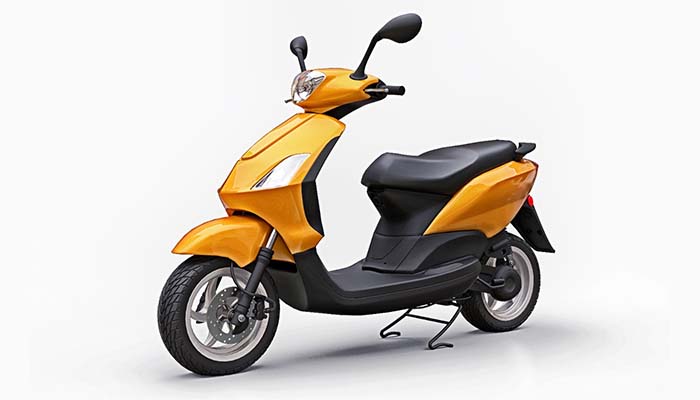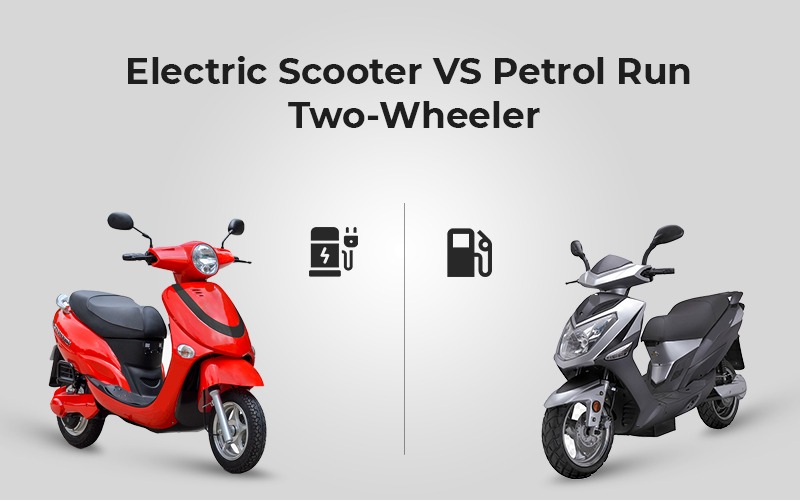In the last few decades, there have been significant developments in two-wheeler innovation. Despite the fact that petrol motorbikes remain dominant in the market, the arrival of e - scooters has provided
prospective buyers with a diverse range of 2 to choose from.
So, if you had to choose between an electric and a gas scooter while buying your two-wheeler, which did you pick? A fast contrast can assist you in making an accurate judgement.
1. Cost
Choosing to be environmentally friendly comes at a major cost, as electric scooters are more expensive than the more economical fuel variant. A few of the best-rated e - scooters use pricey lithium-ion
batteries. However, in order to encourage the acceptance of e-scooters, the Indian government has increased the reward maximum to Rs. 15,000 per kWh, covering about 40% of the overall price of the
two-wheeler.
Buyers who are normally price-conscious will be most interested in petrol motorcycles. The designs available in this market are quite huge and come in a variety of price ranges depending on the engine
displacement. Despite this, a considerable amount of customers are making the transition.

2. Fuel Costs
Electric scooters have no connected fuel usage. On the other extreme, it provides the same efficiency as a gasoline model for 15% of the expense of a litre of gasoline. E-scooters are more cost-effective
in the long run. However, there are just a few charging points where electric cars may be charged. The Indian government is also rewarding companies who can provide self-charging systems or build up
charge stations for electric vehicles, reducing the size of this problem day by day.
Petrol scooters get roughly 50 to 60 kilometres per litre on average. However, certain fuel-efficient vehicles would be able to travel up to 100 kilometres per litre.
3. Range of operating condition
If you only require a two-wheeler to travel short distances, the electric engine is the best option. Long distances over e-scooters can be dangerous due to the restricted availability of supercharger
stations. However, newer e - scooter designs already come with self-charging capabilities, implying that extended rides aren't too far off in the long term.
There are no restrictions on the usage of gasoline scooters. You can ride your gas scooter everywhere as long as it is connected to favourable roads and landmasses, as well as availability to fuel
stations or bring your own refill of fuel.
4. Upkeep
Compared to their gasoline equivalents, electric scooters have comparatively cheap upkeep expenditures. There isn't much maintenance required aside from recharging batteries on a regular basis and wiping
the two at periodic times.
Petrol motorcycles, on the other extreme, must be repaired on a regular basis, particularly if parts need to be replaced or the structural components are old.
5. Practicality
To use an electric scooter, it should be completely charged for at least two hours. If you live in an apartment building, recharging an electric scooter can be a tough challenge because charger facilities
are scarce. Many e-scooters, on the other hand, feature wireless charging that can be recharged at home.
Petrol variations, on the other hand, may be filled up at any filling station, everywhere, at whatever time, adding a layer of comfort when travelling.
It cannot be said with absolute guarantee that one method is better than the other, since they both have their merits and demerits. It all comes down to personal choices, and both of these are pretty good
alternatives for each other.
Tesla two-wheeler batteries provide complete peace of mind to its riders from easy start to high durability.
Therefore, get more mileage than before in your E-scooter equipped with the robust batteries offered by the No.1 EV battery brand, Tesla Power USA, and enjoy hassle-free
rides anywhere anytime.






